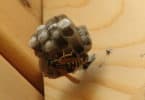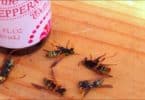Groundhogs are interesting rodents. They are not simply capable of digging, but they are able to swim, and even to climb up into trees. Although ground hogs are generally harmless animals and keep to themselves the majority of the time, if there is a garden nearby, then the gardener had better beware. Groundhogs love to eat in gardens. They especially like root vegetables, legumes, and alfalfa. Likely you are interested in this article as they are making raids on your garden during the months between September and October in a valiant effort to fatten up in advance of the big winter hibernation. This article cover the variety of ways to drive off the groundhog pest from your beautiful and tasty garden.
Fencing out the Groundhog
Undoubtedly the most humane type of pest control is fencing. Although this may not appear to be the best way to keep groundhogs off of your property, especially for those partial to guns, it can work well. Fencing effectively keeps groundhogs out of your garden, if you build it properly. The best kinds for this type of work are one to three inch mesh fence or chicken wire. Make sure that you bury it minimally twelve to eighteen inches beneath the surface, and that the fence extends to a good two feet above the ground level. These animals are capable diggers, so do not be shy about putting the fencing as low beneath the ground as you are comfortable doing.
Utilizing Groundhog Repellents
Groundhog repellents have an advantage and a disadvantage to them. The upside is that they are not life threatening to the hungry little vermin. The downside is that the vast majority of such repellents for groundhogs available today do not have any underlying research or evidence to prove that they actual repel groundhogs. In fact, it is mostly the case that the evidence which they supply is generally testimony or anecdotal forms of evidence to support such claims that they actually accomplish the feat. Several of these varieties on the market are Critter Ridder, made by Havahart®, and Shake-Away, made by Critter Repellent.com.
Employing Live Traps to Rid Your Garden of Groundhogs
Among the most efficient means of getting rid of the hungry groundhogs lies in using live traps. The good news is that this does not harm the little creature. Trapping them is another matter altogether. If you do not know where they spend most of their time walking, then it will be difficult to accomplish at all. Once you do determine this, you will want to put the cage with the food inside of it for them to familiarize themselves with it in advance of setting the trap. In such a way, the groundhogs can learn to trust the trap, and like the idea of having a free meal inside of a metal box. After they have begun to do this once or twice, all that you have to do is to set up the trap door so that it will prevent their escape. Then, you simply take the groundhog to a well shaded, alternatively wooded area far enough away from your house and garden that it will not be capable of quickly and easily returning to trouble your vegetables again.
Fumigating Away the Groundhogs
Probably the most reliable and easy means of driving off your ground hogs lies in fumigating. Utilizing either aluminum phosphide pellets or gas cartridges which create carbon monoxide, you will be efficient in ridding yourself of them. The spring time is the best part of the year to fumigate for groundhogs, particularly late in April or early in May. After you fumigate their burrows, you should cover these up with moist soil, cutting off their escape route and trapping them inside with the gasses themselves.
<>







